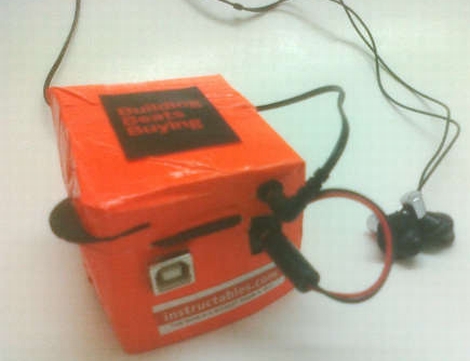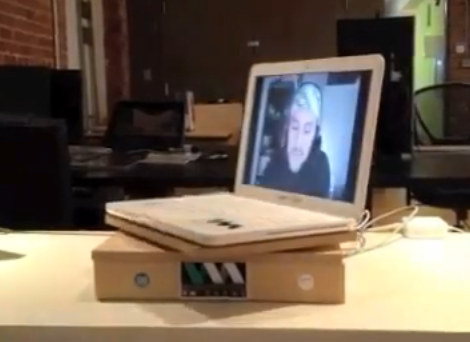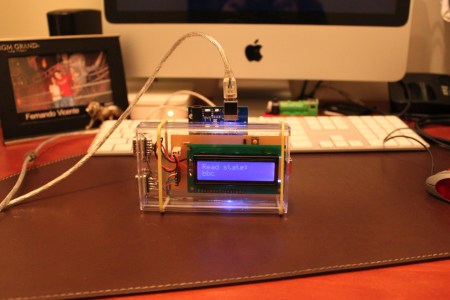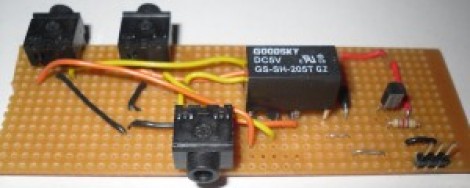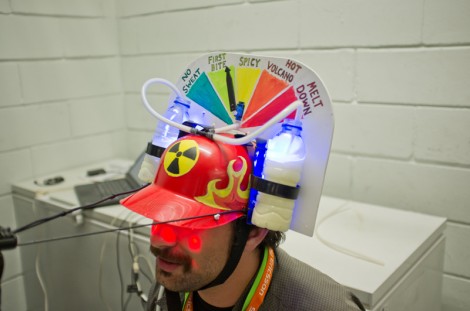
Apparently there was a Nuclear Taco eating contest at the 2010 Codebits Conference. The team from altLab, a Hackerspace in Lisbon, didn’t partake but the discomfort of those that did was burned into their memory. This year, the altLab members decided to build a spciy taco monitoring helmet as part of the conference’s 48 hour hacking competition.
The helmet was inspired by those beer helmets that let you suck down two head-mounted cold ones through a forking straw. In this case, the beer has been replaced by bottles of milk to help quench your burning piehole. But if you do take a sip, observers will know because a flow sensor measures how much you suck down. There’s also a humidity sensor which monitors the sweat building up on your forehead. The Arduino that runs it all tracks this info and uses it to set the discomfort meter on top of the helmet, all while the audience gets a closeup from the camera projecting beyond the helmet’s brim.
We’re happy to say they won 1st place for the creation. Check out their 90-second presentation after the break.
Continue reading “Nuclear Taco Helmet Measures Reaction To Spicy Food”

